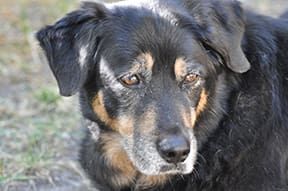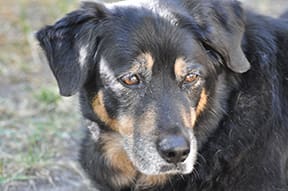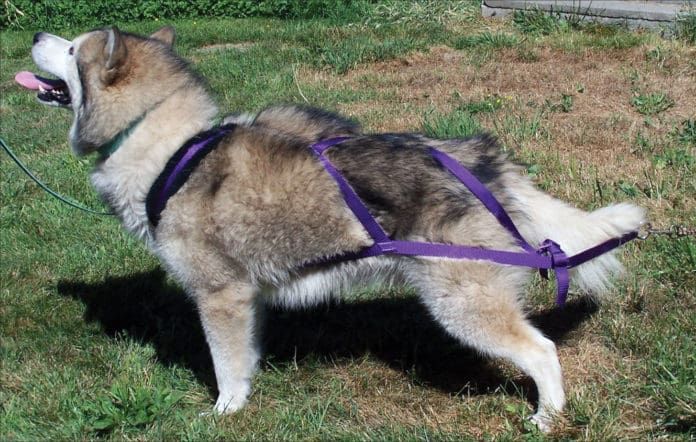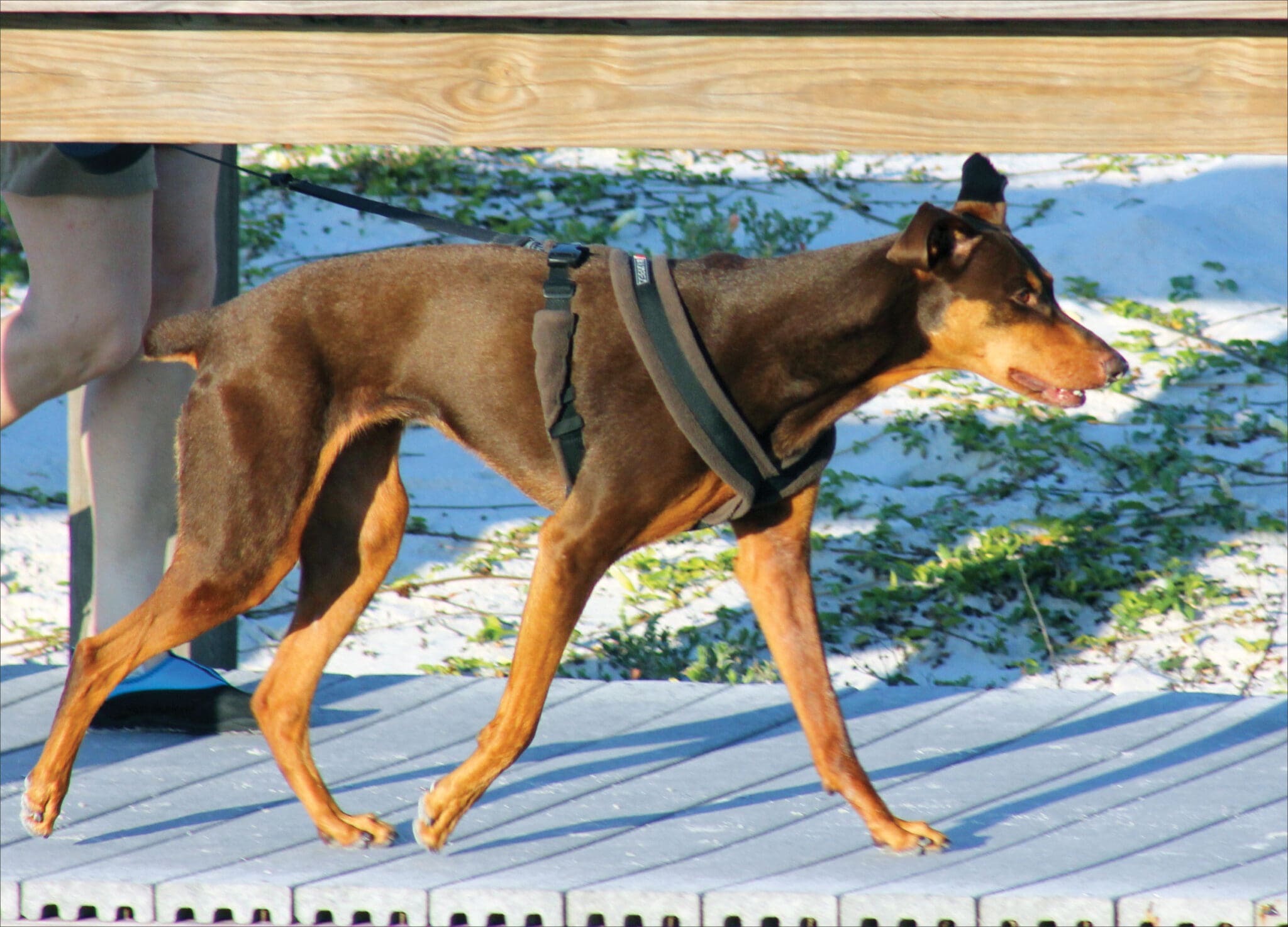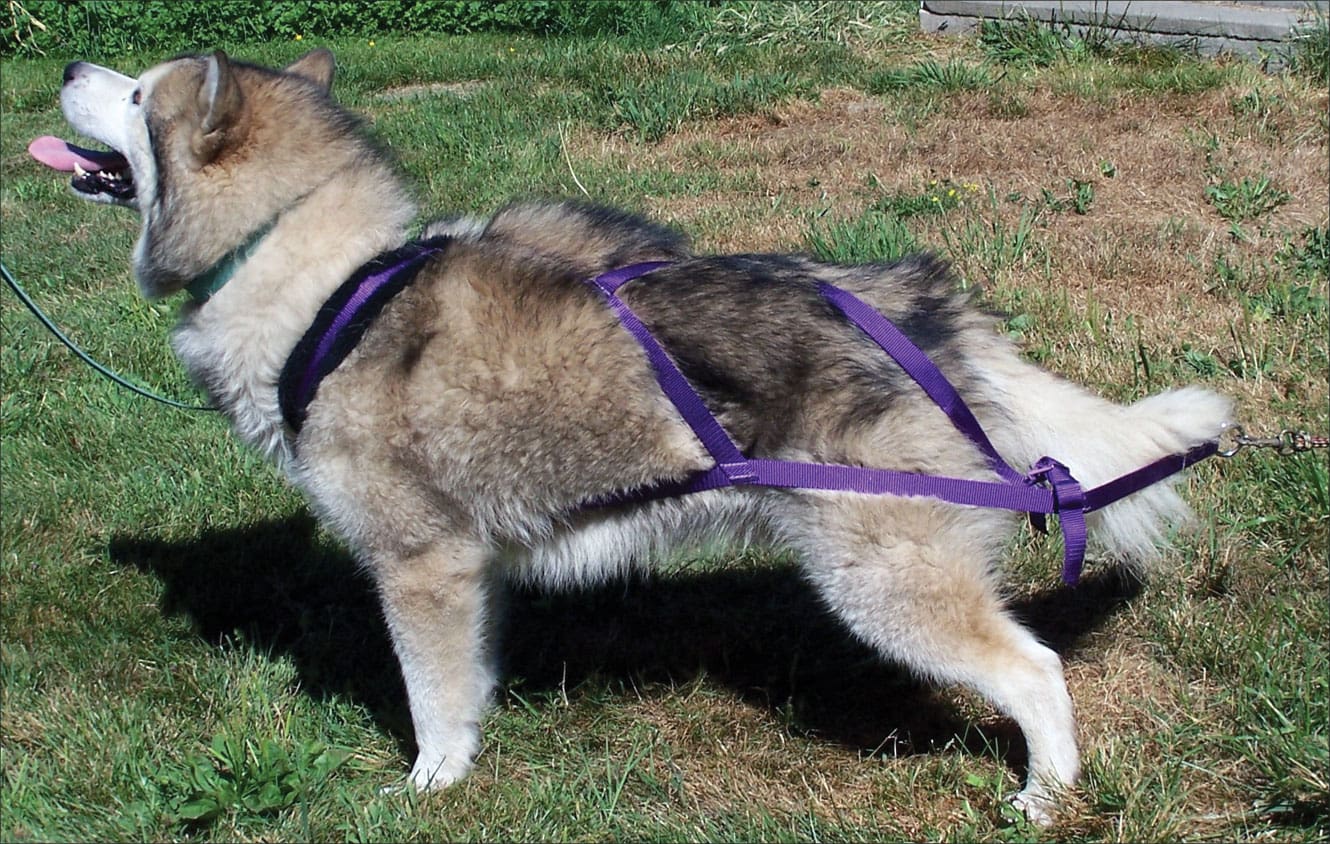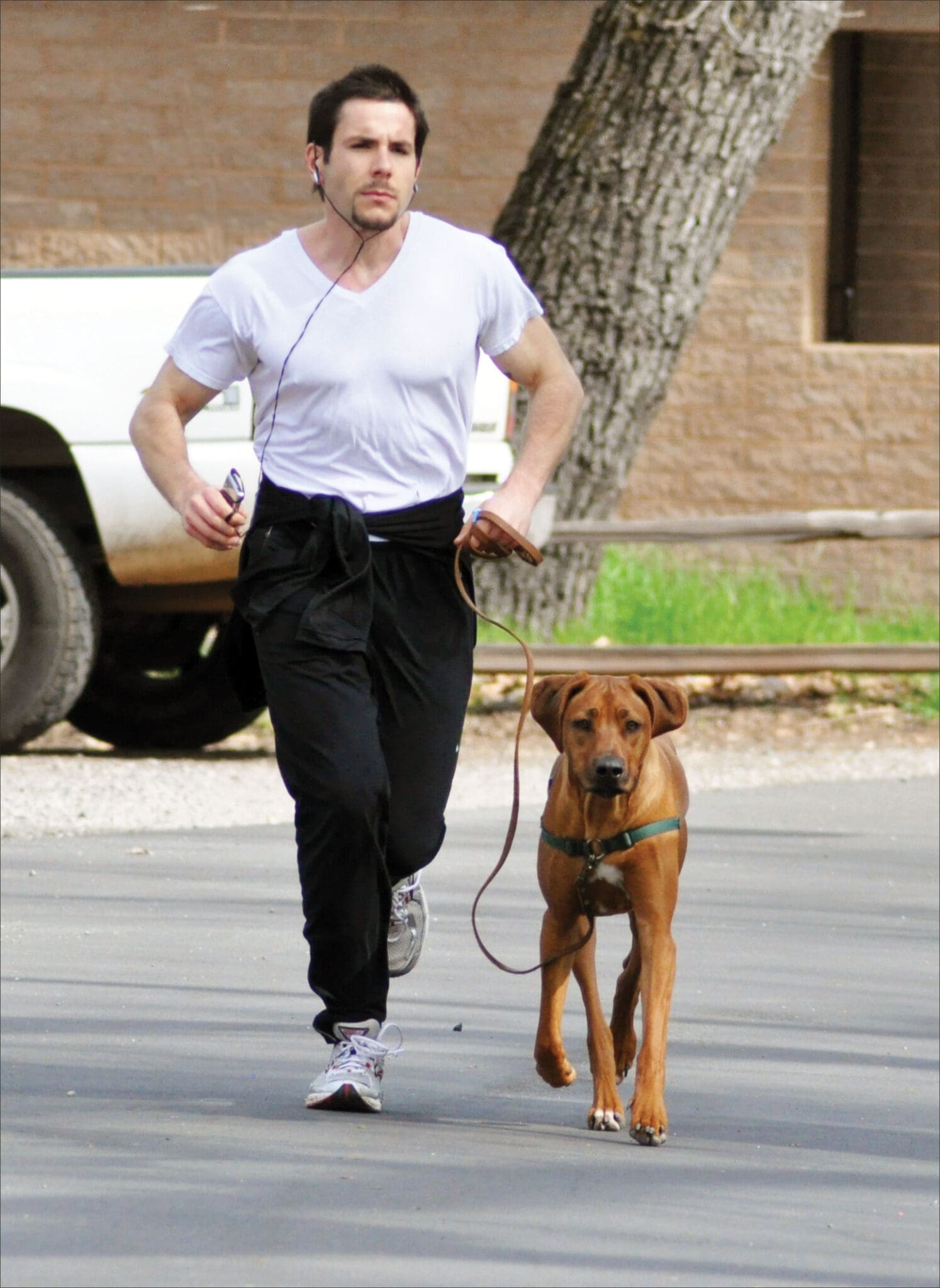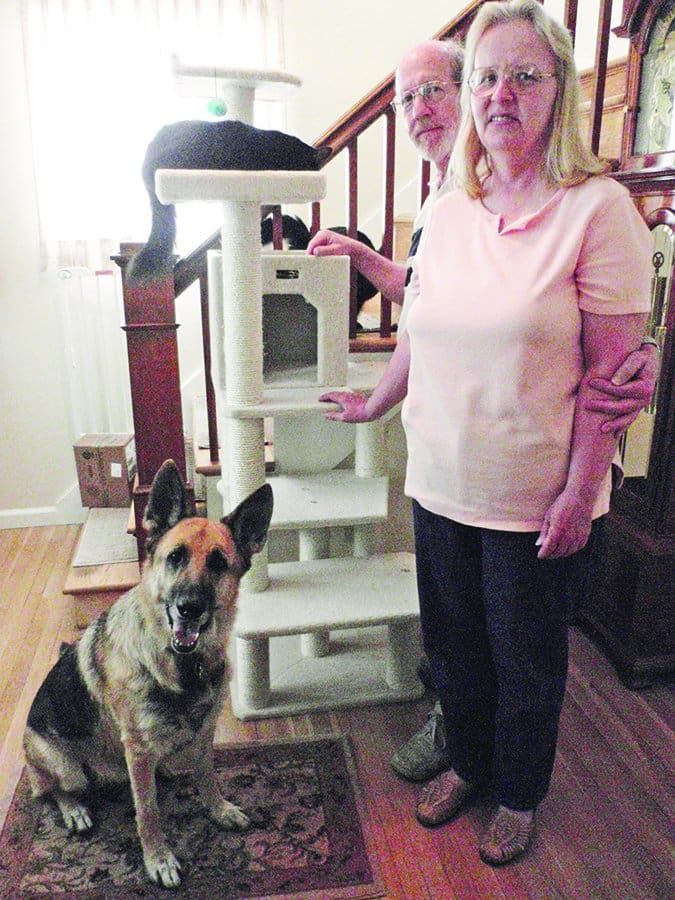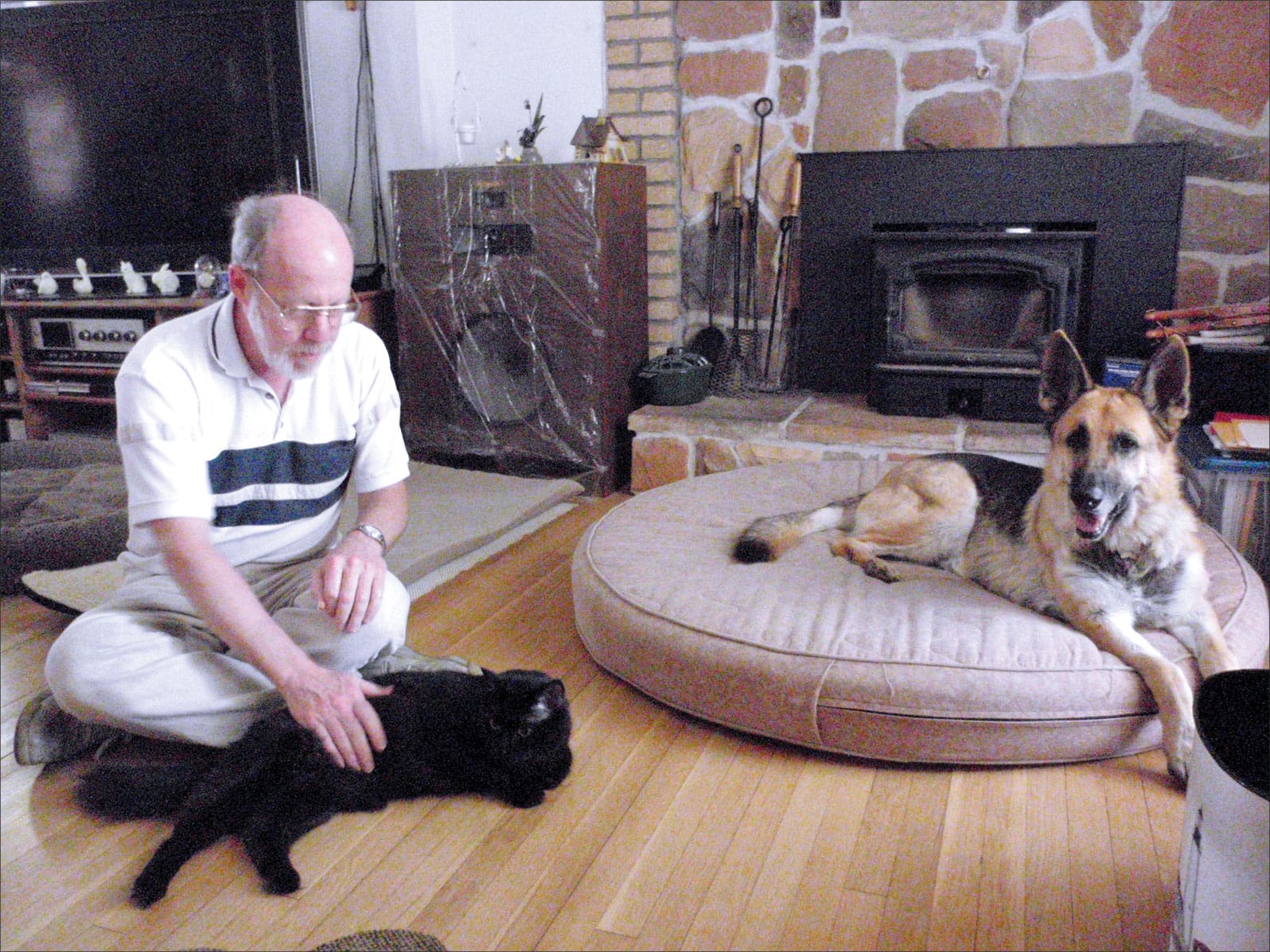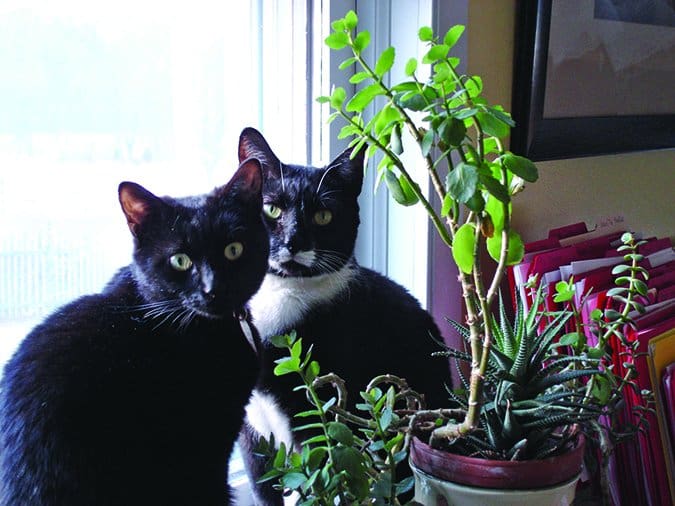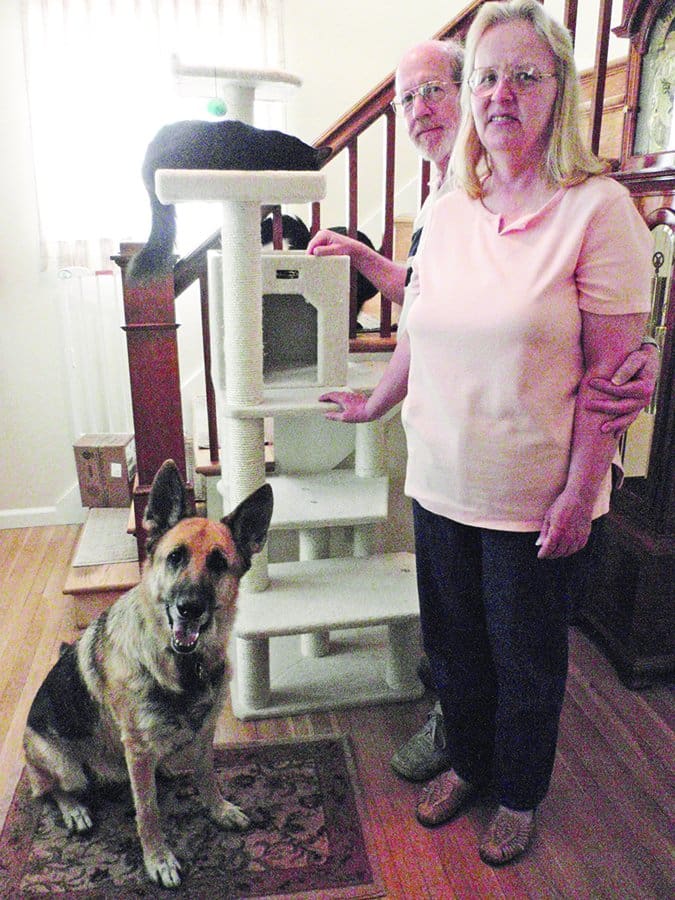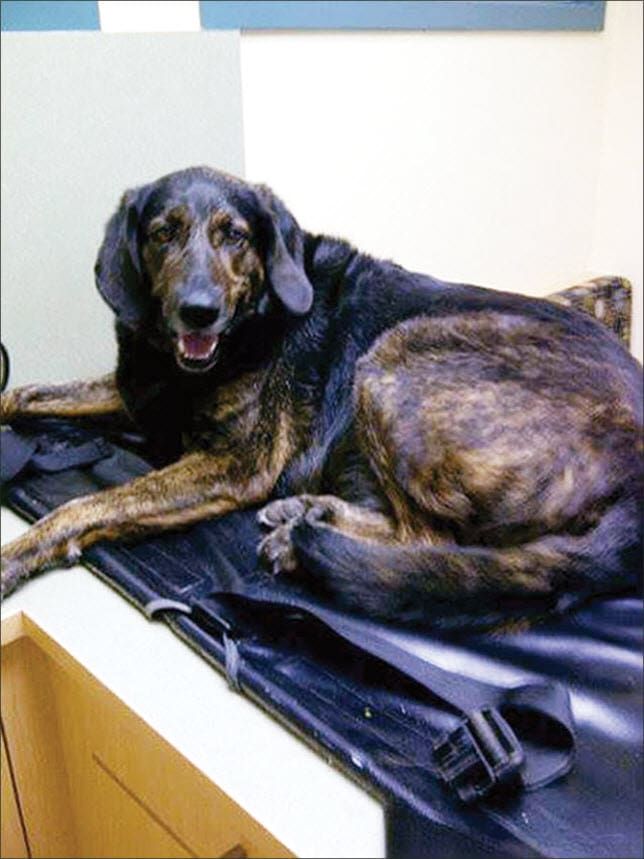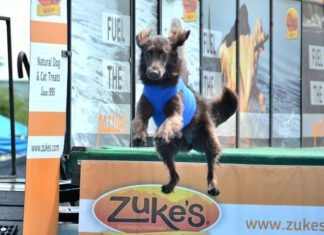On the scale of “how low can you go,” passing your dog off as a service animal so you can bring him to public places where dogs are otherwise banned has to be close to rock bottom. Yet fake service dogs are everywhere out there: Chain-store managers complain about having to clean up after them in their shopping carts and aisles. Websites cater to them, selling official-looking vests and identification badges. And fellow fanciers are alternately embarrassed and enraged when the faux disabled book their dogs onto airplanes so they can hop to the next dog show or agility trial.
According to the 2000 U.S. Census, 43 million Americans identify themselves as having some sort of disability. But only a fraction use service dogs. One advocacy organization (servicedogcentral.org) estimates that the number of task-trained service dogs is 100,000 to 200,000 – significantly less than 1 percent of the nation’s population of people with disabilities.
But loopholes in federal law make it very easy for posers to proliferate. Indeed, fake service dogs are so ubiquitous – or at least the awareness of them is – that they’ve crept into the popular culture. In September 2011, actress and stand-up comedian Natasha Leggero raised some hackles on NBC’s “The Tonight Show With Jay Leno” when she deadpanned about putting a vest on her dog to impersonate a service dog. Leggero told the late-night host, “Sometimes I pretend like I have epilepsy,” so she can get into restaurants with her dog.
That presumably was a joke, but the fakers are out there. “I’ve seen them. I’ve met them,” says veteran Lon Hodge of suburban Chicago, whose service dog Gander, a 3-year-old Labradoodle, helps him deal with autoimmune arthritis as well as post-traumatic stress disorder, or PTSD. “When you’ve been around service dogs like I’ve been, it’s really easy to spot a dog that’s just being a good dog, as opposed to one that’s been trained as a service dog.”
When Hodge has asked people point-blank about whether their dog is really a service dog, all have freely admitted that they weren’t, he says. “People seem strangely proud of the fact that they’ve scammed themselves into a motel without paying the extra $30 pet fee, or they got their dog in to a movie theater.”
DEFINING TERMS
Language is important, and no less here, where there are distinctions between “therapy dogs,” “service dogs” and “emotional-support dogs.” Though the terms are sometimes used interchangeably, each means a different thing.
“Therapy dogs” are those who provide affection and comfort to people in a variety of settings, including hospitals, retirement and nursing homes, hospices and schools. They may be called in to help people cope with the aftermath of traumatic events, such as natural disasters or tragedies, like this year’s devastating tornados in Moore, Oklahoma, or the Sandy Hook school shooting in Newton, Connecticut. And they may find themselves on call for relatively low-trauma but nonetheless stressful occasions, like final-exam week at college campuses.
A variety of organizations certify therapy dogs, including the Delta Society and Therapy Dogs International. While their tests vary, their main objective is the same: to make sure the dogs are calm, friendly, and under control in a variety of environments, some of them overwhelming or stressful. But other than knowing some basic obedience commands, therapy dogs do not need to be trained to be anything other than polite pooches who are happy to dispense and accept affection.
While a therapy dog may have an avocation, a service dog has a definite vocation: service or assistance dogs are specifically trained to help a person with a disability in some aspect of his or her everyday life. Unlike therapy dogs, they are specifically and vigorously protected by the Americans with Disabilities Act of 1990. In other words, under federal law, a hospital has the right to refuse to allow therapy dogs to call on patients, but it cannot prevent entry to a visitor accompanied by a service dog.
Ironically, service-dog imposters can only exist because of that landmark legislation, which prohibits persons with disabilities from being required to answer questions about the nature of their disability. While this provides privacy and dignity for the individual, who has a right to navigate through her day without answering intrusive questions about why she needs the dog at her side (or in her purse), it is a double-edged sword, allowing opportunists all the wriggle room they need to let their pet dogs impersonate service animals.
EMOTIONAL RESCUE
Until several years, just about any animal could be labeled a service animal, and interpretation of the federal law was getting pretty creative. In one California case, a woman managed to get her building’s no-pet clause waived when she produced a doctor’s note that said breeding hamsters helped her deal with her infertility and inability to express her maternal instinct. Cats, parrots, iguanas, monkeys – all could be considered bona-fide service animals under the law.
In March 2011, the U.S. Justice Department revised its regulations for implementing the Americans with Disabilities Act. The definition of “service animal” was narrowed to mean just dogs – specifically, those that are “individually trained to do work or perform tasks for a person with a disability.” Those tasks might include guiding a person who is blind, alerting a diabetic about a plummeting blood-sugar level, or pulling a wheelchair. (One other species also got a green light, albeit with more restrictions: Miniature horses, which, like dogs, can be trained and housebroken, can also be used as service animals under the law.)
Service dogs also help people with emotional or mental disabilities, but, again, they must be trained for the job: They aren’t just comforting their handlers, but are actually providing ways for them to cope. For example, a service dog can be taught to calm a person with post-traumatic stress disorder (PTSD) by positioning himself to create a sort of furry safety barrier during an anxiety attack, or a service dog might remind a person with mental illness that it is time to take a prescription medication.
In other words, a service dog doesn’t just make you feel better and lower your anxiety; in order to live up to that title, a dog must actually be trained to do something that alleviates your emotional distress.
The Justice Department revisions specifically mention animals that are used for emotional support, noting that they do not quality as service animals under the Americans with Disabilities Act if their “sole function is to provide comfort or emotional support.”
That’s not to say, however, that emotional-support animals are never afforded special recognition. Some states and municipalities have laws that are different from the federal law, and that require business establishments to provide access even to emotional-support dogs. In addition, the federal Air Carrier Access Act has a wide-ranging definition of assistance animals, and it includes emotional-support animals. The handler must present a doctor’s letter that says the animal is needed to help deal with a specific mental or physical illness that “substantially limits one or more major life activities.”
In the general public, however, confusion still abounds. Earlier this year, actress Kristin Chenoweth tweeted about her emotional-support dog, Madeline, being barred from an American Airlines flight when a gate agent said she didn’t have the right paperwork. Saying she was “bullied and embarrassed,” the actress reportedly burst into tears, and the airline later issued an apology and a refund of her $125 cabin pet charge.
Celebrity-news show TMZ reported on Chenoweth’s “trip from hell” and described Madeline as a “service dog” – and was quickly corrected by the actress via Twitter, who said she was an emotional-support dog. At least she knew the distinction.
GEARED UP
Dress for success, the saying goes. The same applies when someone is trying to masquerade his or her dog as a legitimate service dog. Web sites that cater to the service-dog community sell all types of vests in a rainbow of colors, embroidered with words like “Service Dog, “Full Access,” “Working Dog/Do Not Pet.” Though many of the sites warn that fraudulent use of the products they sell is not permitted, they don’t – and probably can’t – ask for any proof to weed out the lying from the legitimate.
Judith Kujawa of Brighton, Michigan, uses her service dog Syd, a Rhodesian Ridgeback, to help with her mobility, which was impaired after an accident. Syd helps her climb stairs, and walking with him gives her balance – and confidence. He always wears his vest when the two go into places of business, restaurants, and stores.
“I was extremely surprised that ordering Syd’s vest, as well as the service dog patch, was so easy, that it was so readily available online,” Kujawa says, adding that the ease of acquiring a vest probably makes it more likely people will cheat.
Like Kujawa, many service-dog handlers opt to have their dog wear the special vests, especially if they have a disability that is not visually identifiable or immediately apparent.
Renée Le Verrier of Newburyport, Massachusetts, has a 2-year-old Great Dane, Sir Thomas, who helps her with mobility issues resulting from Parkinson’s disease. “He’s my furry four-legged cane,” she says. “He’s not going anywhere – whichever way I’m about to topple, he’s there.”
Wearing a vest is an important part of taking Sir Thomas out in public. “When I go to the airport or am in a restaurant, I absolutely have his vest and kerchief on,” Le Verrier says. “It screams ‘service dog.’”
And sometimes, turning up the volume is a necessity. Thomas’ vest telegraphs his role to people who are curious about the giant breed and what Le Verrier is doing with him. “It’s almost comical sometimes. They’ll say, ‘Is he a hearing dog?’ and they don’t realize they’re asking me,” she explains. “Sometimes they don’t even see me – they just think, ‘Oh, it’s a Great Dane – how exciting!’”
Sometimes, it isn’t obvious that Le Verrier has a disability; the vest helps thwart questions. “I might look fine,” she says, “but in an hour I might not be.”
While bona-fide service dogs like Sir Thomas often wear vests, the same is usually not true for identification cards, badges, shields, and other accessories that are sold online. “The ADA mandates that this dog and owner have full access to all public places. It is the LAW,” reads one laminated card that is sold online. Emblazoned with the words “FULL ACCESS REQUIRED,” it sells for $21.99.
Another moneymaker for these websites is enrollment in a registry for service dogs. The companies do not test the dogs, or offer any assurances about the validity of the information they are recording: They just assign a number and issue a card. The certification is wholly unnecessary: The Americans with Disabilities Act does not require handler or dog to have or present identification. And Le Verrier thinks doing so, even under the most benign circumstances, is a bad idea.
“If someone asks you for papers, and you comply, it might make it more helpful for the person who’s asking,” she says. “But think about the precedent you’re setting for everyone else.”
For her part, Kujawa carries along business cards that she distributes to anyone who needs a little education. The cards explain “what and where a service dog can go,” she says. “Which is anyplace I can go!”
LESS IS MORE
Outrage over fake service dogs is a natural response. But some advocates for the disabled point out that legislating morality is not only futile, but may have serious repercussions for the very community it is trying to protect.
Michelle Spencer, a disabled veteran from Portland, Oregon, points out that stringent measures, such as national certification or registration of service dogs, will create more red tape for those who actually need them. Is trying to ferret out each and every imposter worth the risk of limiting a person with a disability’s legitimate access? As someone who actually has a service dog, she thinks not.
“It reminds me of the legislation put in many years ago in Oregon around driver’s licenses and illegal immigrants,” she explains. “Everyone said, make it mandatory that to get a driver’s license you have to show a birth certificate. Seems pretty simple, right? Well, what happened was it made it harder for citizens to get a driver’s license, and those who couldn’t just drove anyway.”
Spencer also thinks some canine posers are less problematic than others.
“There are those people who take their perfectly well-behaved pets on airplanes or into restaurants. Unless someone says that the dog isn’t a service dog, no one knows. These are 99 percent of the examples I hear … ‘I know a breeder who took their show dog to show X,’ or ‘You should have seen the plane full of dogs going to the dog show,’” she says. “Is it wrong? Absolutely. Is there anything I or anyone else can do about it? Usually not.”
More egregious and troublesome, she says, are those people who take ill-behaved dogs into public and pass them off as service dogs. “These are the dogs that pee in the hardware store, bark and lunge at the public, and do things that are quite obviously not appropriate for service dogs,” she says. “These are the folks that tear at the rights of we who have and use service dogs in a completely appropriate manner. They are the ones we are concerned about.”
There are laws that are already on the books that deal with disruptive service dogs, whether they are “legit” or not. Federal law allows businesses to ask two questions: “Is this dog a service dog required because of a disability?” and “What work or task has the dog been trained to perform?”
They cannot require medical documentation for the person or ask about the person’s disability; nor can they require a special identification card or training documentation for the dog. They also cannot ask that the dog demonstrate his ability to do the task for which he has been trained. But, if a dog is out of control and the handler cannot manage the situation, or if the dog is not housetrained, the person with the disability can be asked to leave the premises. And they can also be charged for any damage their dog may have done.
Spencer adds that some states are pursuing legislation to punish “fakers.”
“In Oregon, I and others have been working with the state legislature to make it a class C misdemeanor to say one’s dog is a service dog when it isn’t,” she says. “I suspect, over time, case law will set a precedent, and word will get out, but it is a process.”
IT’S ALL ABOUT ME
Years before her accident, Kujawa remembers taking a flight and meeting a man on board with a Dachshund. “He was traveling to a dog show,” she says, “and he was proud that he managed to take the dog on board, with a borrowed service vest.”
The problem then and now, Kujawa says, is an epidemic of self-entitlement.
“I think that, across the board, people – at least those so inclined – just take advantage of what they can. They just feel entitled to get any assistance possible, be it financial or designating their dog an assistance dog,” she says. “Sadly, most seem to feel that if it’s OK for someone who truly requires a service dog, it’s OK across the board. It is not.”
Hodge adds that most of the dozen or so people he’s met who have admitted to faking their dog’s service status honestly don’t think there are any long-term consequences to their actions. He thinks otherwise. “If their dog bites someone, it’s not just their legal liability,” he explains. “Now I have people who have created a hostile environment. There are a lot of people who are naturally afraid of dogs from the get-go. I’ve had people shriek when they get into Gander’s space. The reason I have a service dog is to avoid the stress.”
Also underlying the fake-service-dog phenomenon is a real lack of understanding of what a service dog does, and the responsibility that partnership places on the handler.
“People say to me, ‘You’re so lucky – you can take your dog everywhere with you,’” Le Verrier says. While she usually responds with a vague, “Yeah, he’s a good boy,” what she really wants to say is: “Have you thought about the reason why he’s with me?”
In addition to being indispensable helpers, service dogs are also a lot of work, Le Verrier reminds. “It’s like having a toddler and a date at the same time.” While Sir Thomas is at her side and attentive – that’s the date part – she has to plan for his needs, tote along his supplies, and make sure he doesn’t get distracted by koochie-cooers.
On some level, the self-absorption that leads people to palm their dogs off as service dogs also extends to the insistent desire to interact with a working dog like Sir Thomas, despite all the requests not to. “People want to pet him, and I’ve come to realize that it’s not really for him – it’s for them,” Le Verrier says. “That helps make it easier to say no when people ask.”
Speaking of saying no, there is another group of individuals who arguably could do more to take a stand on service-dog fakers. They are those who know people who do it, but never speak up.
“Maybe the problem is really with me, or at least people like me, who let their friends get away with it without saying anything,” says a dog owner who has several friends who are misrepresenting their dogs as service dogs, and who wants to remain anonymous for that reason. “I’m familiar with the ‘They came for the XYZ and I didn’t say anything, and then they came for me and there was no one left to speak for me’ argument. And that rings true. But I’m not willing to personally confront or take on those people. It’s not a battle I choose to fight.”
And in most cases, unless you know someone very well – including the intimate details of their physical and emotional status – it’s not a good idea to assume that their service dog is anything other than what they say it is. After all, giving the benefit of the doubt is an integral part of safeguarding the the freedom and dignity that people with disabilities deserve. Stopping those who take advantage of that is important – but not at the expense of those who need service dogs to begin with.
“The issue may be clear,” concludes Michelle Spencer, “but the solution isn’t necessarily so.”


